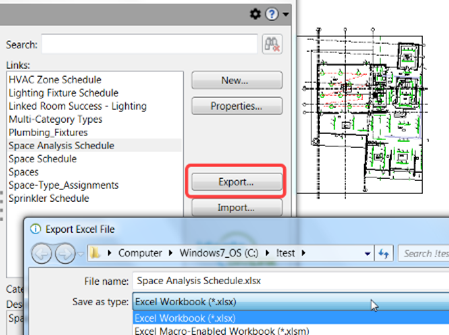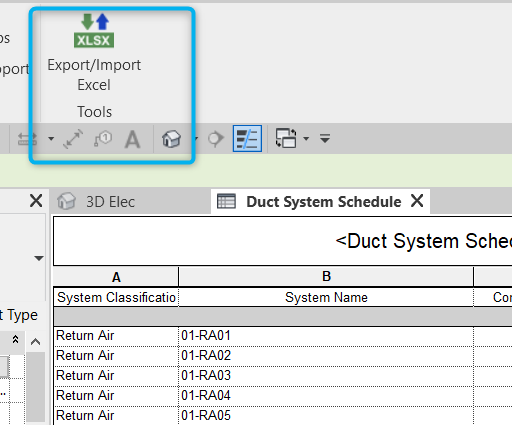Revit Tools for Every Task: Your Ultimate Layout Friend
Wiki Article
Excel-to-Revit: A Game-Changing Workflow for Architectural Design - Revealing the Tricks
Presenting excel-to-revit, the game-changing process that will certainly reinvent your layout process. With excel-to-revit integration, you can enhance your building design, unlock performance, and make best use of collaboration within your team. Get ready to take your architectural design to the next level with excel-to-revit!The Power of Excel-to-Revit Integration

Think of the ease of having the ability to modify and update job data in Excel, and instantaneously see those modifications shown in your Revit design. No much more manual data entry or tedious updates. With Excel-to-Revit combination, you can save time and reduce mistakes by leveraging the power of Excel's solutions and functions to automatically create accurate data in Revit.
Not just does this assimilation enhance effectiveness, yet it additionally boosts collaboration amongst staff member. You can conveniently share Excel data with coworkers, that can after that import the data right into their Revit models. This promotes a smooth exchange of info and ensures that every person is dealing with the most current information.

Enhancing Building Layout With Excel-To-Revit
Streamlining architectural style is simplified with using Excel-to-Revit (import excel into revit). With this powerful integration, you can maximize your operations and save important time throughout the layout procedure. By leveraging the capacities of Excel and Revit, you can effortlessly transfer information in between both platforms, eliminating the demand for hands-on information access and minimizing the risk of errorsExcel-to-Revit enables you to import and export data easily, enabling you to quickly upgrade and change your architectural designs. You can create routines, compute quantities, and produce records in Excel, and afterwards transfer that data directly right into your Revit version. This integration makes sure that your layout information is always updated and integrated, removing the need for hands-on updates and minimizing the opportunities of disparities.
By utilizing Excel-to-Revit, you can additionally take benefit of the powerful computational capabilities of Excel. You can carry out complicated estimations, assess information, and automate repetitive tasks, all within Excel. Then, with just a few clicks, you can import the results back right into Revit, enabling you to make informed style decisions and enhance your building layouts.
Unlocking Efficiency: Exploring the Excel-to-Revit Operations
Optimize your productivity by perfectly integrating Excel and Revit for a more efficient operations. With the Excel-to-Revit operations, you can open a whole new level of efficiency in your building layout process. By using the power of Excel's data management capacities and incorporating it with the versatility and precision of Revit, you can streamline your design procedure and save valuable time.Among the vital advantages of this combination is the ability to import and export information in between Excel and Revit. This implies that you can easily move job information, such as room timetables or material quantities, from one software application to the other, eliminating the demand for hands-on information entrance and decreasing the chances of mistakes. You can likewise develop custom-made formulas and computations in Excel to automate repeated jobs and do complex estimations, which can then be flawlessly integrated right into your Revit models.
In Addition, the Excel-to-Revit process enables much better coordination and collaboration between team members. With Excel acting as a central information hub, several team participants can work with different facets of the job simultaneously, sharing and upgrading information in real-time. This check my site not just boosts communication however additionally guarantees that every person is dealing with the most current data, getting rid of the threat of variances.
Making Best Use Of Collaboration: Excel-to-Revit for Architectural Teams
By effortlessly integrating Excel and Revit, building groups can considerably improve partnership and accomplish much more efficient layout end results. When utilizing this effective process, you can quickly transfer data in between Excel spread sheets and Revit designs, enhancing the style process and boosting interaction among group participants.Moreover, by leveraging Excel's powerful calculation capacities, you can execute complicated calculations and evaluation on your style data, providing useful insights and driving informed decision-making. This combination also allows you to export data from Revit to Excel, enabling you to develop extensive reports, charts, and graphs for discussions and analysis. This joint workflow advertises effective interaction and sychronisation among group participants, as Excel functions as a central center for information administration and sharing.
Total, by accepting the Excel-to-Revit operations, architectural groups can achieve greater see here now levels of partnership, performance, and accuracy in their layout process. revit tools. This assimilation equips groups to interact flawlessly, guaranteeing that every person is on the exact same web page and contributing to the success of the job
Unveiling the Tricks of Excel-to-Revit Assimilation

Among the secrets of Excel-to-Revit combination is the capability to utilize the power of formulas and computations in Excel to drive specifications and produce facility geometries in Revit. You can link Excel spreadsheets to Revit households, permitting you to input information straight into the spreadsheet and have it immediately upgrade in the Revit version. This streamlines the design process and makes sure precision and uniformity throughout the project.
Another secret is the capability to produce custom-made timetables and records in Excel, making use of information extracted from Revit. This allows you to imagine and examine job info in a manner that is not possible within Revit alone. You can quickly produce quantity take-offs, cost estimates, and project timelines, providing valuable insights for decision-making and task monitoring.
On top of that, Excel-to-Revit assimilation makes it possible for efficient partnership among staff member. Numerous customers can work with the exact same Excel spreadsheet concurrently, making it simpler to straight from the source collaborate and track modifications. You can also use Excel's commenting attribute to supply responses or connect layout revisions.
Verdict
So there you have it, the keys of excel-to-revit assimilation have actually been introduced. This game-changing workflow has the power to streamline architectural design, unlock performance, and maximize cooperation for architectural teams. By integrating the power of Excel and Revit, designers can now work much more effectively, save time, and create much better styles. Why wait? Begin integrating excel-to-revit combination into your architectural style process today and reinvent the method you work.With simply a couple of clicks, you can import the outcomes back into Revit, allowing you to make informed style decisions and optimize your architectural layouts.
By making use of the power of Excel's data management capabilities and incorporating it with the adaptability and precision of Revit, you can streamline your design procedure and conserve important time.
By seamlessly integrating Excel and Revit, building teams can considerably improve collaboration and attain much more efficient layout results. When using this effective process, you can easily move data between Excel spread sheets and Revit designs, streamlining the style process and boosting communication among group members.In addition, by leveraging Excel's powerful calculation capacities, you can perform intricate computations and analysis on your style data, giving important understandings and driving educated decision-making.
Report this wiki page